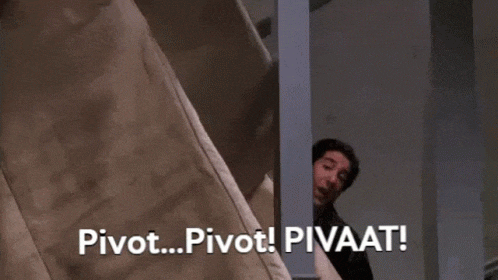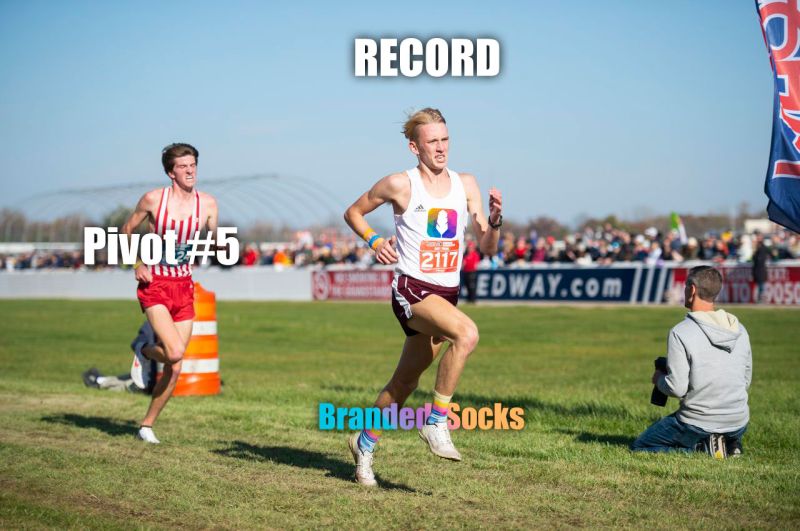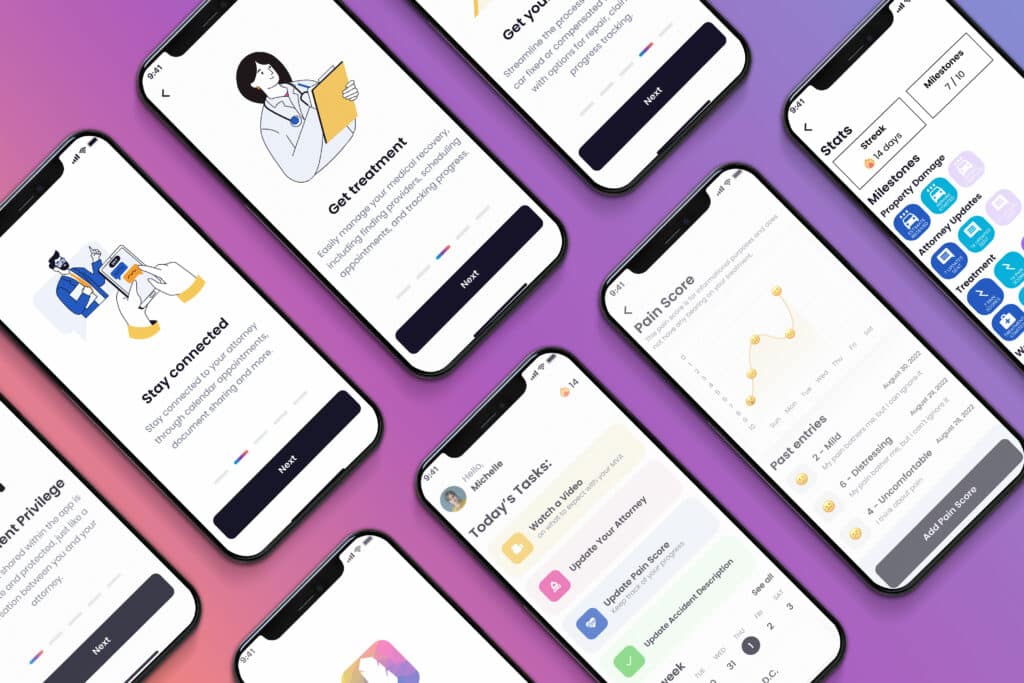Our startup RECORD is almost a year old, but boy has it changed a lot in its first year of life. We actually ended very far from where we began…
This is going to be a series of posts surrounding our 7 pivots and how we got to where we are today.

Case Management: Pivot #1
You see, back in late 2021 I was approached to come help take an already existing and very robust personal injury case management app to market. It was being used internally at a law firm with tremendous results for their firm.
I had been feeling the pull to get into a startup, so the idea was very enticing.
I started doing some research on existing case management systems. While we felt that we may be able to deliver a new way of doing case management, the existing competitors like Filevine and CASEpeer Legal Software and others were already light years ahead of us. This later became known as pivot number one.
We then attended Startup Ignition in January of 2022 and officially kicked off our new company… MaxLaw. Yeah that name didn’t last long.
We went back to the drawing boards with new knowledge about problem hunting and the entrepreneurial scientific method. Let the pivoting begin!
Artificial Intelligence: Pivot #2

What startup doesn’t at least TRY to have an artificial intelligence angle these days?? 😃
We were really excited about this one. We were going to use big data on case and settlement data to predict values of future cases using AI. Who wouldn’t want that, right!?
Well I’ll tell you who… I went out and interviewed a bunch of personal injury attorneys and asked them about it. Turns out, predicting case values is job numero uno for THEM and if I were to replace them with a bot… they really weren’t excited about it.
So while it was (and still is) an awesome idea, totally doable, the people I was going to be selling it to weren’t going to buy it.
Very glad I did those interviews before building that out. Saved me a lot of time and money. Needless to say, RECORD is not an AI company… (yet 😃) Pivot number two was in the books ✅
Medical Record Retrieval: Pivot #3

Now, what are we going to do…
So after our first ideas fell flat, we really wanted to find a home run idea. So I hit up a few more firms and, this time, asked if I could interview their entire staff. Hadn’t ever done that before, but I was sure the secret golden solution was hidden somewhere; I just had to uncover it.
A little bit of backstory, when I worked at Tingey Injury Law Firm, we did a TON of work optimizing every facet of the firm, from human workflows to digital solutions. We really had a smooth-running machine! So when I’m doing these interviews, I’m lucky that I am usually familiar with what they’re talking about.
While interviewing the staff at a few firms, the idea of medical record retrieval was brought up. The staff complained about the arduous process and that nothing out there was currently meeting their needs.
I instantly remembered this problem from my law firm days and remembered how we had optimized the processes at the firm with workflows, but now was maybe the time I could solve it with technology.
I went back to my desk and started doing some research. I then went and interviewed about 20 doctors in the space to learn about their side of the process.
What I came up with would have required both the medical provider and law firm software to have API capabilities. That way, when a medical record was completed, the doctor would simply click the “send” button and voila, the record would appear in the case management software.
The issue here ended up being a “riding the wave” problem. Just like when you’re surfing, if your timing isn’t right, you won’t catch the wave. I believe the timing wasn’t right for this solution as most medical software was outdated and inadequate technologically for this level of integration…
It would have been like building out a plug without a socket to plug it into. So… we bagged it.
Pivot number three was in the books.
Come to find out later, there are actually some very innovative companies like Arctrieval Inc doing some incredible things with Medical Record retrieval that I hadn’t even considered. I’m glad they’re working on the solution.
Communication: Pivot #4

Okay okay… this one has to work out…
So there I was… I had interviewed attorneys and their staff, doctors and their staff, and even interviewed some car accident victims. I started realizing where the real complaints lie…
Communication.
Communication in many law firms is REALLY dated. Many have only started texting their clients in the last few years… They still rely heavily on fax machines. Lots of documents are sent via the good ol’ USPS. With regard to communications, it’s like they’re stuck in the 90’s.
I also learned that the staff of attorneys and doctors who know the personal injury industry frequently move between offices/practices. They’ll work for a doctor one month, then switch to an attorney the next, then maybe another attorney and back to another doctor. Once you know personal injury, you kind of know it from all angles. They also keep the relationships they’ve made with other people throughout their career, which is often a very valuable part of their resumes.
With this newly acquired knowledge… I started thinking about how communication has evolved in other industries over the past couple decades. And it hit me… Slack, but not slack, LinkedIn, but not LinkedIn… A place for everyone to keep and maintain relationships while facilitating communication via text, document transfers, video calls, and more…
Well… I was ready to hit the ground running on this one. We were going to build out a market-network for the personal injury industry. But… as this being a pivot might suggest… this was not the winner – for what later became an obvious reason.
Attorneys. Don’t. Like. Change.
Especially when it comes to how they communicate with people. They like to stick with tried and true methods that they know work. So when I introduced the idea of changing from their traditional methods, the fear of change overtook them. Even if they “wanted” it… they wouldn’t end up using it because they wouldn’t trust it, and heaven forbid they encounter a bug along the way that messed up their communication… it would have been over.
A communication tool… ☠️☠️☠️ Turns out it’s still better to CALL (or fax)… Saul…
Onto figuring out the next idea… But man, it was at this point where I was really starting to feel beaten down. Was I ever going to find a good idea?? Could we even come up with an idea that would work?!
Obviously the answer is yes… or RECORD wouldn’t exist… but there were still a couple more pivots before we got to the end of the rainbow. Stay tuned.
Lien Tracking: Pivot #5

Pivot number five is a little unique, the idea is still a great one. It’s just not the first one. Nooo, it’s not branded socks…
At this point, through my interviews, I became friends with many doctors who work with patients involved in personal injury cases. It’s important now that you understand how the medical side of personal injury works. One word:
Liens.
Whenever a provider is requested to help on a personal injury case, they agree to treat the patient with absolutely no payment upfront and risk not getting paid at all if there isn’t a settlement.
That means as you’re seeing the doctors for your injuries, you can be racking up literally thousands (and sometimes tens and hundreds of thousands) of dollars in medical bills that will hopefully be paid back once the case settles.
Why would doctors risk doing all their work for free? Because…
Personal injury recoveries are considered the final golden frontier of medical reimbursements. A provider can bill health insurance and get pennies on the dollar for their charges… Orrrr you can hold out for a personal injury settlement and possibly get 70-80 cents on the dollar. The risk is very much worth it.
So what does all this mean? How could we, as a startup, improve this system?
If you’re an attorney reading this, you’re probably thinking that I’m going to say we thought about going into settlement advances for doctors. Definitely not, I don’t want to be in the loan shark business.
I’m going to be a little coy about this pivot because we are going to build this one, just not first. Why not first?
For this medical provider idea to succeed, it relies on other components succeeding first. When we pull off what we envisioned for RECORD, phase two will be for the providers. And it should really help make their lives a lot easier.
The other great thing about putting this idea second in line is that when we get there, we can probably offer this solution at no charge to the providers. Pretty crazy, right?
We have a way to go before we undertake this one, though. First things first.
Pivot number five… not good enough now, but should be good enough later.
Car Estimates: Pivot #6

Here goes pivot number six… can you guess what motivates many people to hire a personal injury attorney?
Getting their vehicle repaired (or replaced).
From a legal perspective, it’s important that a car not only be paid for but repaired. The value of a repair can make an impact on the settlement value of the medical claim.
I knew quite a bit about the legal side of getting your car fixed, but I hadn’t looked into the body shop side. So… I set out to do some more interviews.
After interviewing some shops, I learned quite a bit about the process from their side.
Turns out, most people who get an estimate on their car never get the work done. That means body shops spend a ton of time creating estimates that they know they’ll never get paid on.
They might not get paid for two reasons: the client decides to keep the cash instead of getting the car fixed, or they take it to a different body shop.
The insurance company usually prepares an estimate which is ALWAYS lower than the body shop estimates. A low estimate is strategic, the insurance company knows most people take the cash, so they lowball the initial offer hoping the client takes the money and runs. All while knowing they would have to pay more should the person get the repairs done.
So if the body shop happens to get the repairs, they know they will have to submit supplement requests for the remainder of the repairs, which is a lot of back and forth on the phone trying to talk the insurance company’s approval.
So after learning about all that… my mind started forming ideas around optimizing the clunkiness of the current process. So much time is lost creating estimates that will never be used. So much time is wasted submitting extra claims to the insurance company. So many lost opportunities for work to the competition.
What if all this could be solved with technology? I’m sure it could.
What’s the issue with solving this problem? Razor-thin margins. Body shops are a pretty cutthroat business, so many shops are trying to make just enough money to cover costs plus a couple of bucks on every job. They want to get the gig, so they estimate low.
Providing them with a software solution would have to come at such a low cost it would make it very difficult to operate at a profit. Unfortunately, on this one, manual processes still outweigh a digital solution.
Next pivot… The pivot of all pivots that becomes RECORD!
RECORD: Pivot #7

And now… pivot number seven! RECORD! So how did this happen…
After coming up with six different ideas and being told none of them would work… The discouragement was real. I was really getting bummed that none of these ideas were working out.
I was reviewing my notes, looking for that secret hidden pattern… and I came across a note from an interview I did with a good friend of mine. The note said, “He told me about his favorite client ever.” So I called him up and asked for more details about that favorite client…
He started telling me the story about this favorite client, the client would text before and after appointments and didn’t ask to be texted back, he never missed an appointment, he rarely asked questions, and when he did they were often very thought-provoking, and at the end of the treatment he showed up with a spreadsheet that had every doctor’s visit with accompanying bill amounts with most of the records attached. 😱
As he was telling me about this golden client, I couldn’t help but think… what if I could make every client a FAVORITE client? I mean, couldn’t tech make all of that a lot easier?
So I went back over my list of interviewees and started asking about their best, and worst (😬) clients. The pattern was evident, and the problem wasn’t anyone’s fault. Just the nature of a personal injury case.
You see, attorneys and their staff handle hundreds (sometimes thousands) of cases. Cases follow kind of similar paths, and often clients have similar questions with small variations. For example, “Who is paying for my treatment?” You can imagine how that might start to get… old… after a while.
And clients, for most of them it’s the first time they’ve been in a car accident. So to no fault of their own, they have no idea what’s going on and have a lot of, often simple, questions.
Enter RECORD.
We help make every client a great client by enabling them to self-manage their case. That way their interactions with the law firm are more meaningful and can be focused on building relationships and getting to know the situation better, the stuff that makes each case unique.
If you or someone you know is a personal injury attorney (or works for a personal injury firm), send them my info! We’d love to help.
Leave a Reply